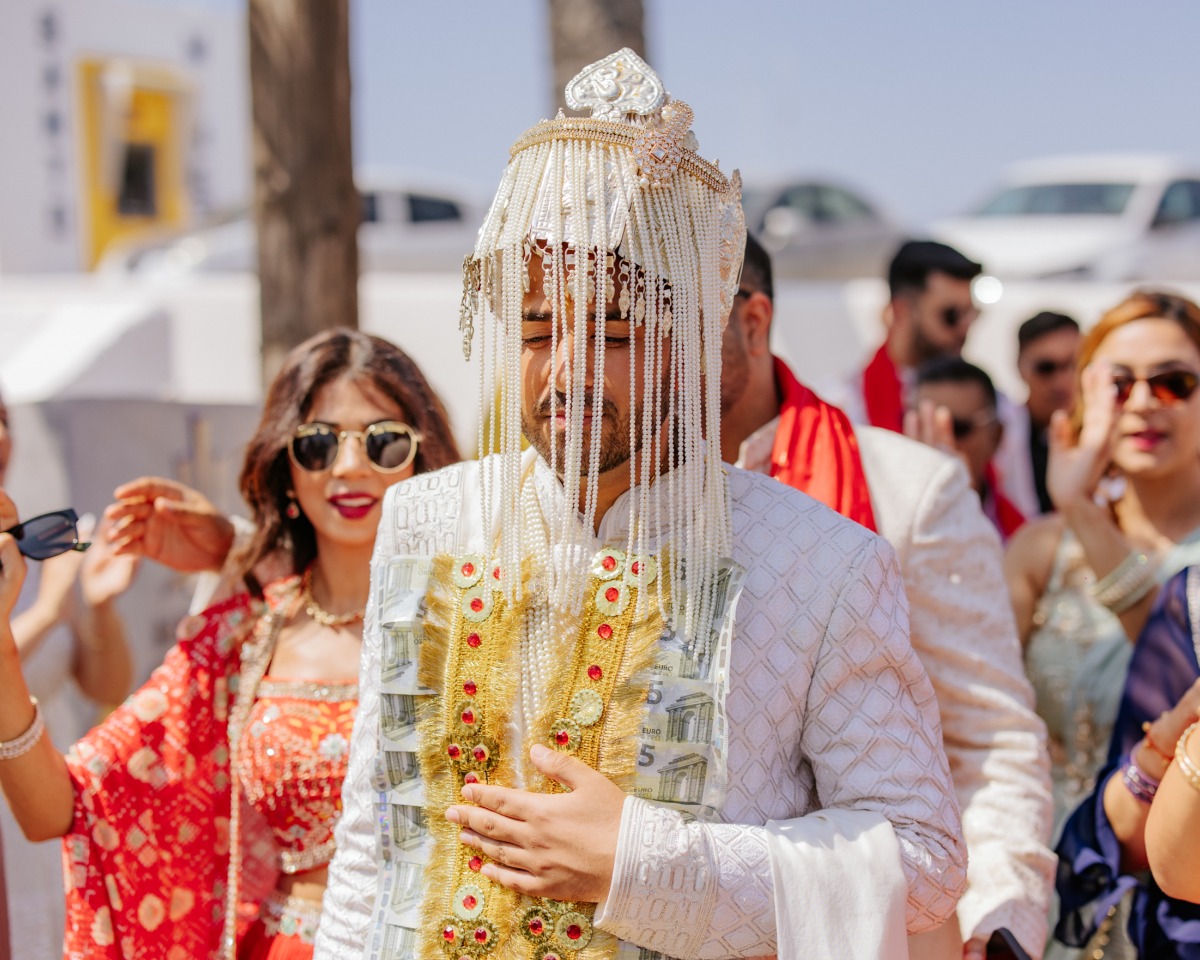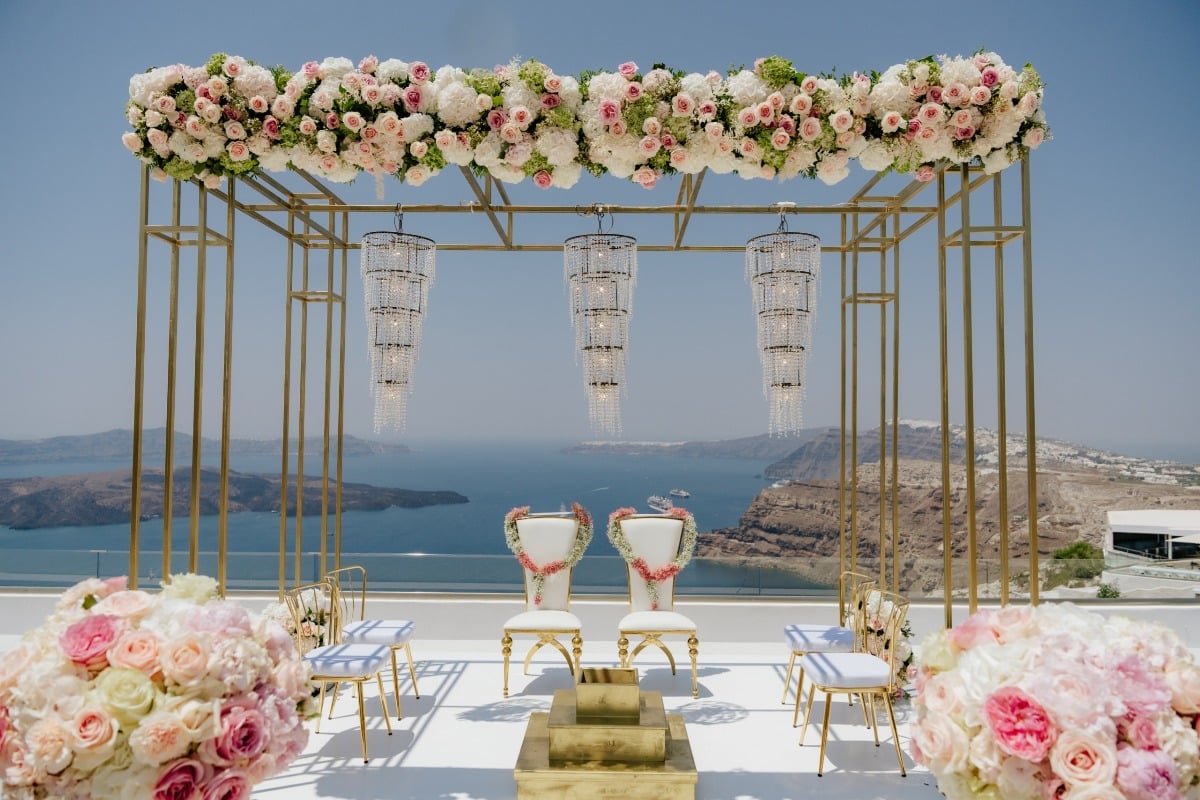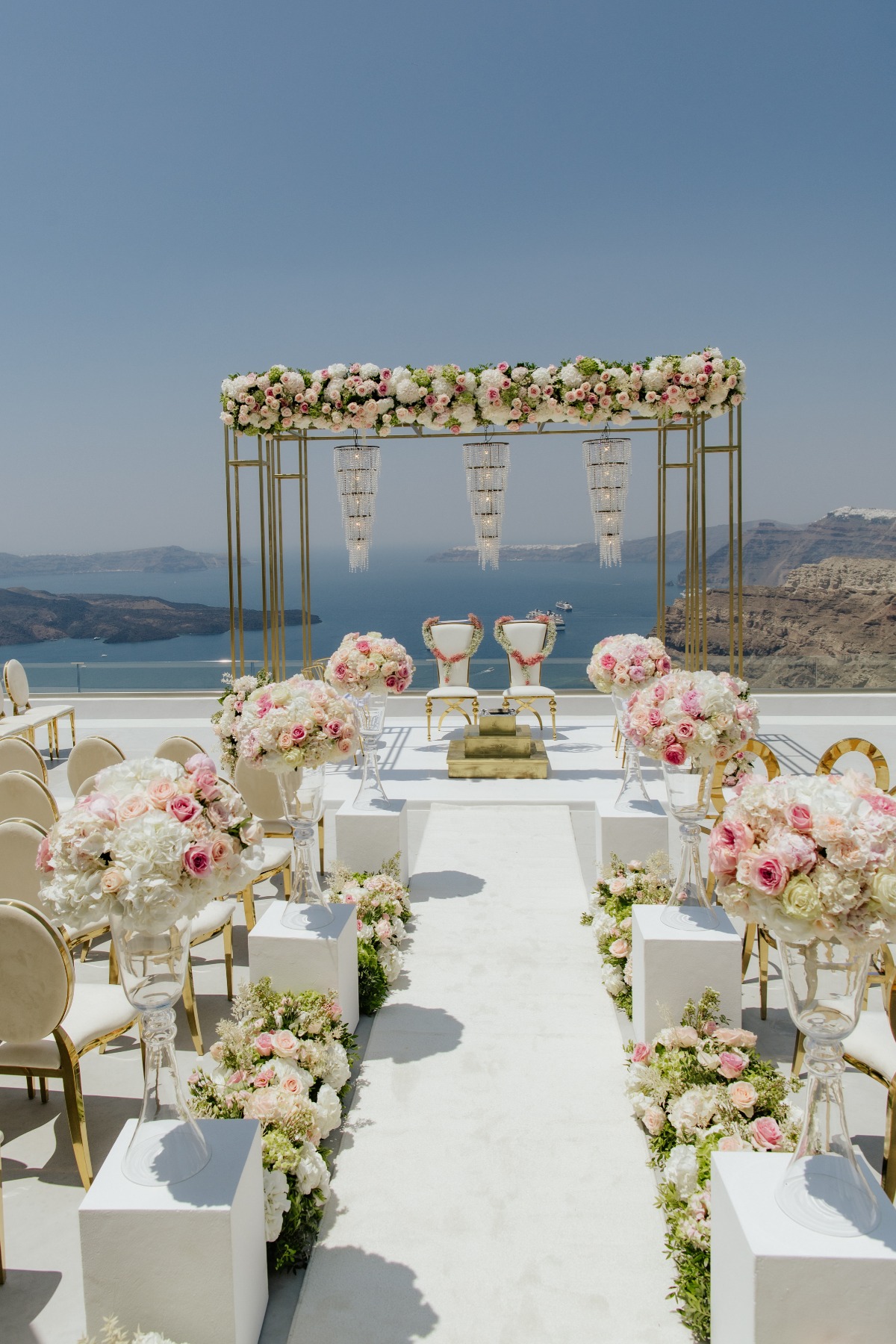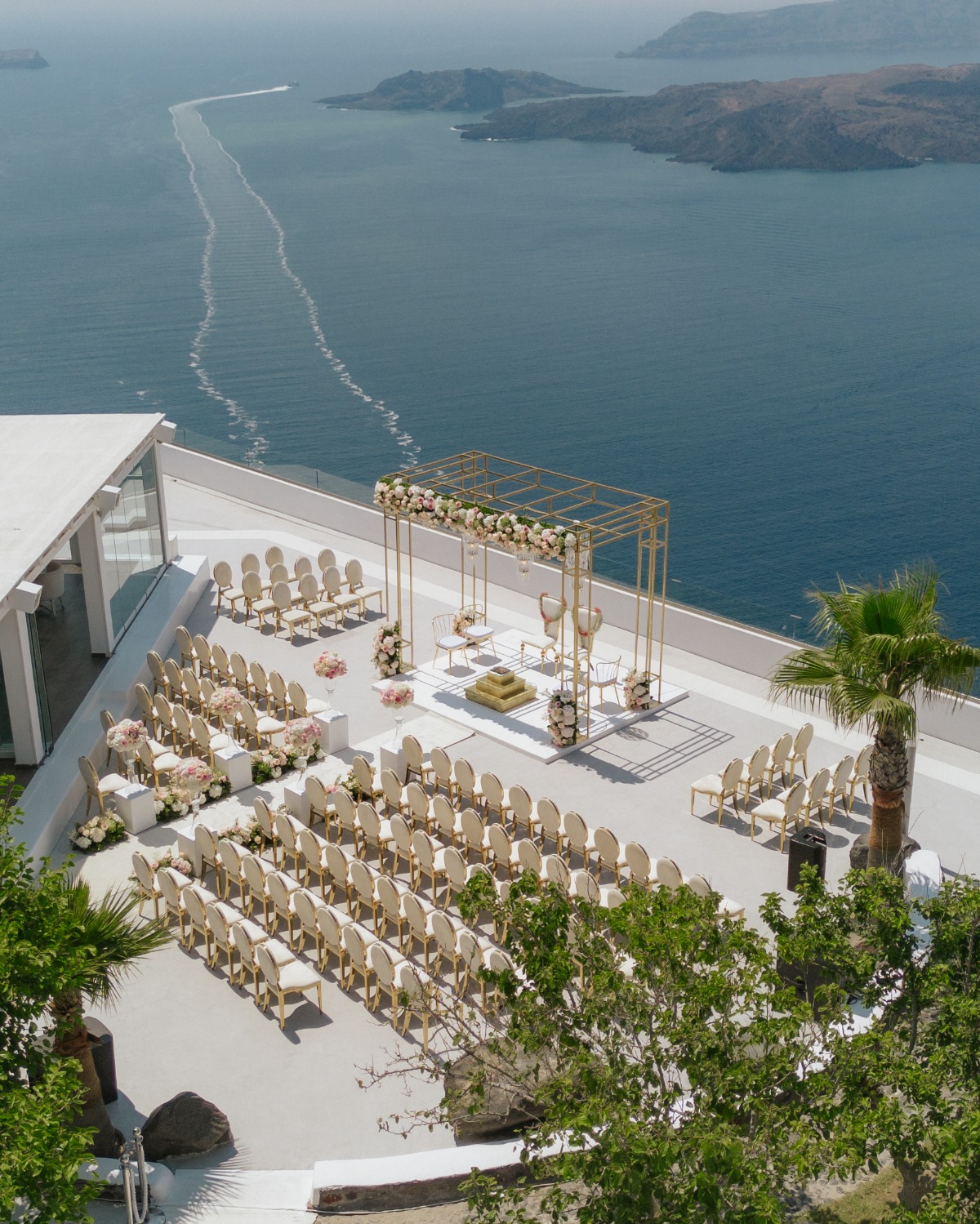A bright and colorful 3-day luxury Indian wedding in Santorini
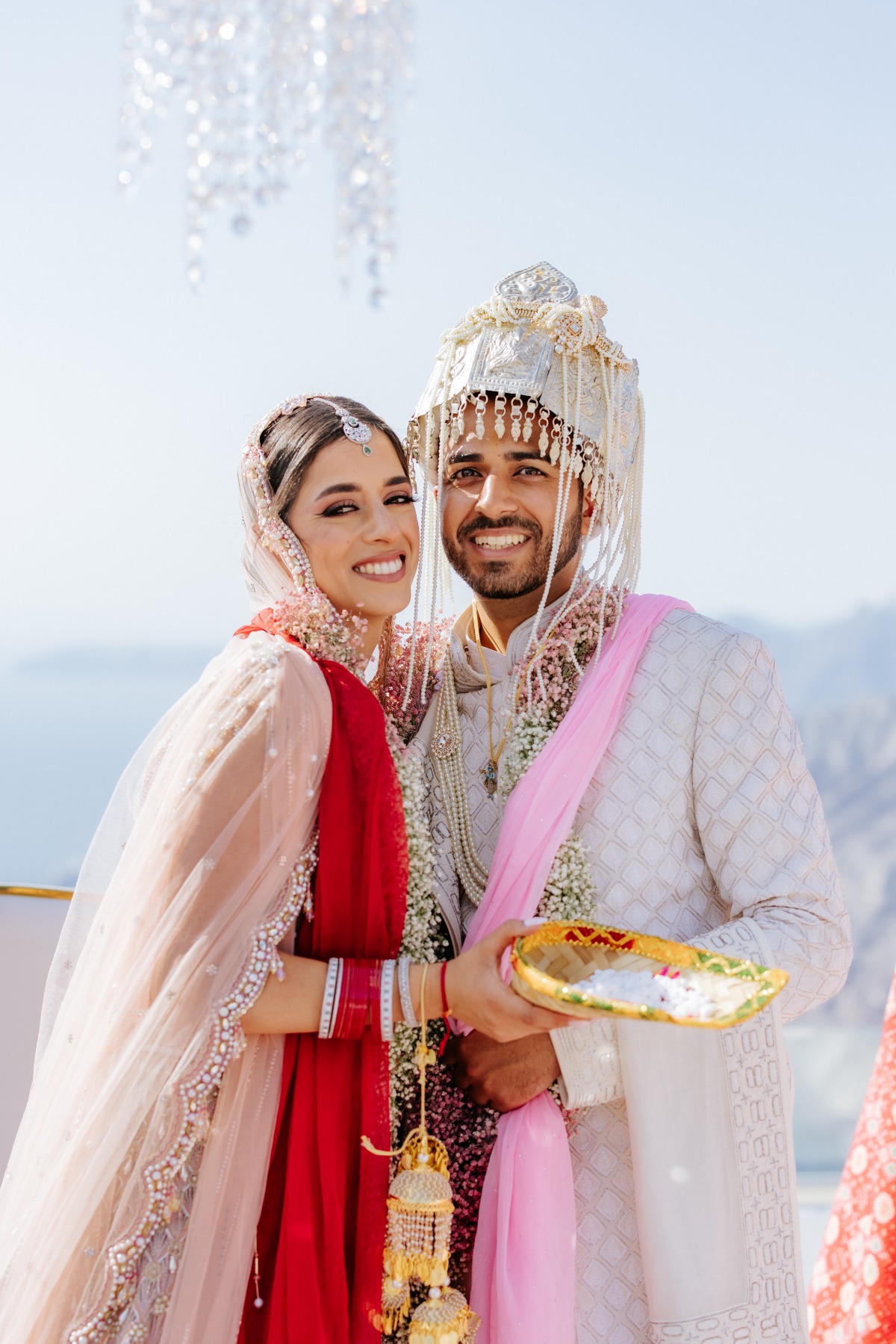
Indian weddings are known for their vibrant colors, intricate rituals, and joyous celebrations. Before the grand nuptial ceremony and reception, there are several pre-wedding ceremonies that hold deep cultural significance. These events, including the Mehendi, Sangeet, and Haldi ceremonies, are not only about fun and festivities but also carry profound symbolism. Planning and designing this amazing Hindu wedding in Santorini at Santorini Gem Wedding Venue gave this couple and their design team, DW Events (a Wedding Chicks recommended vendor!) the chance to merge all these eastern spiritual ceremonies with the breathtaking beauty of the Aegean Sea and the picturesque Cycladic architecture of Santorini.
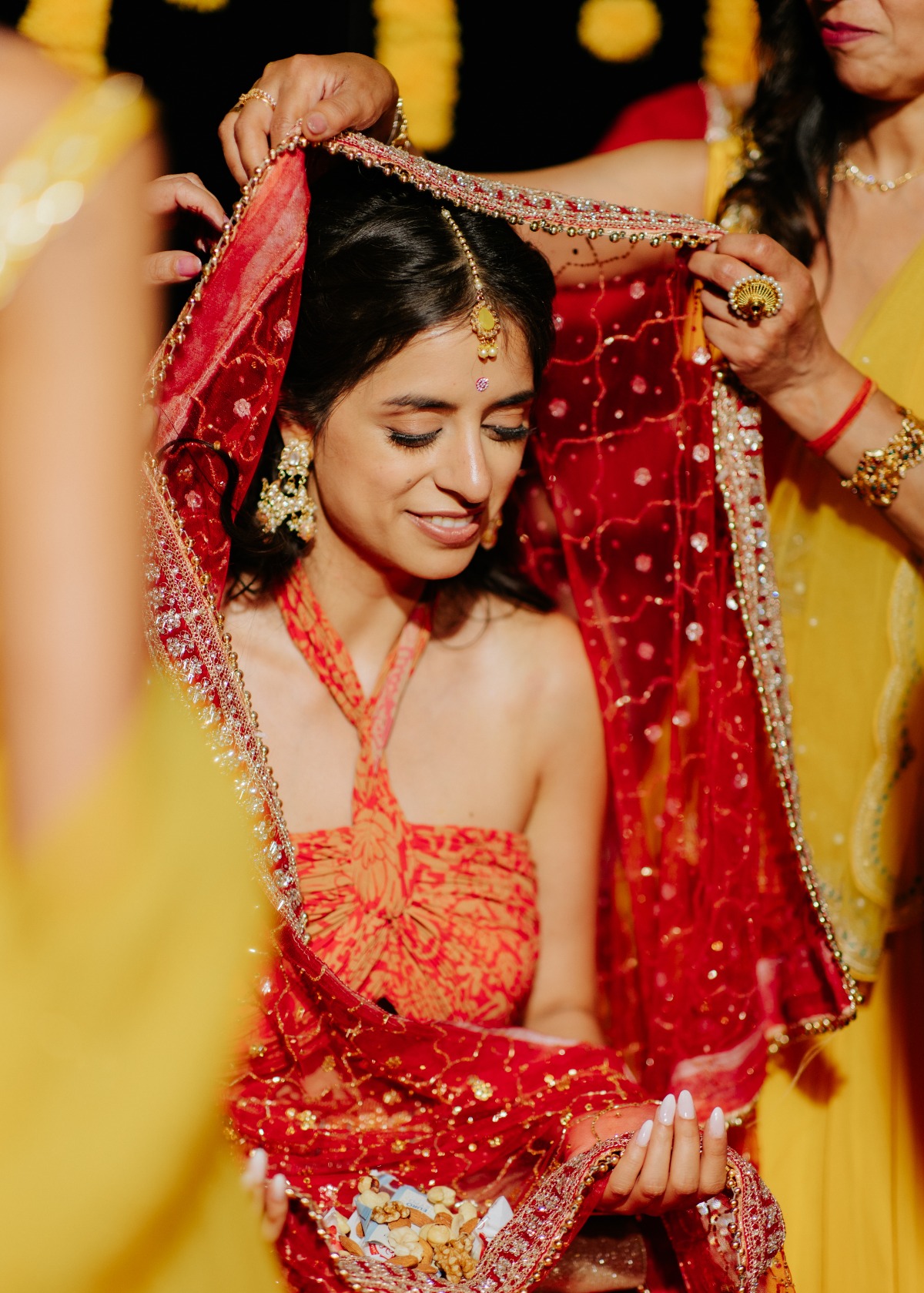
Henna: A beautiful and symbolic tradition
On the first day of this three-day wedding photographed by Dream Diaries India, the bride and groom took part in the Mehendi ceremony, a delightful event celebrated with dance, music, and intricate henna art. Rawina’s hands and feet were adorned with beautiful henna designs, with many of the female guests also participating in this artful tradition. The ceremony symbolizes the transition of a girl into womanhood and marks the start of the wedding festivities. The use of henna is believed to bring good luck, prosperity, and protection from evil spirits. The darker the henna color, the stronger the bond between the bride and her new family, signifying a harmonious relationship with her mother-in-law and husband.
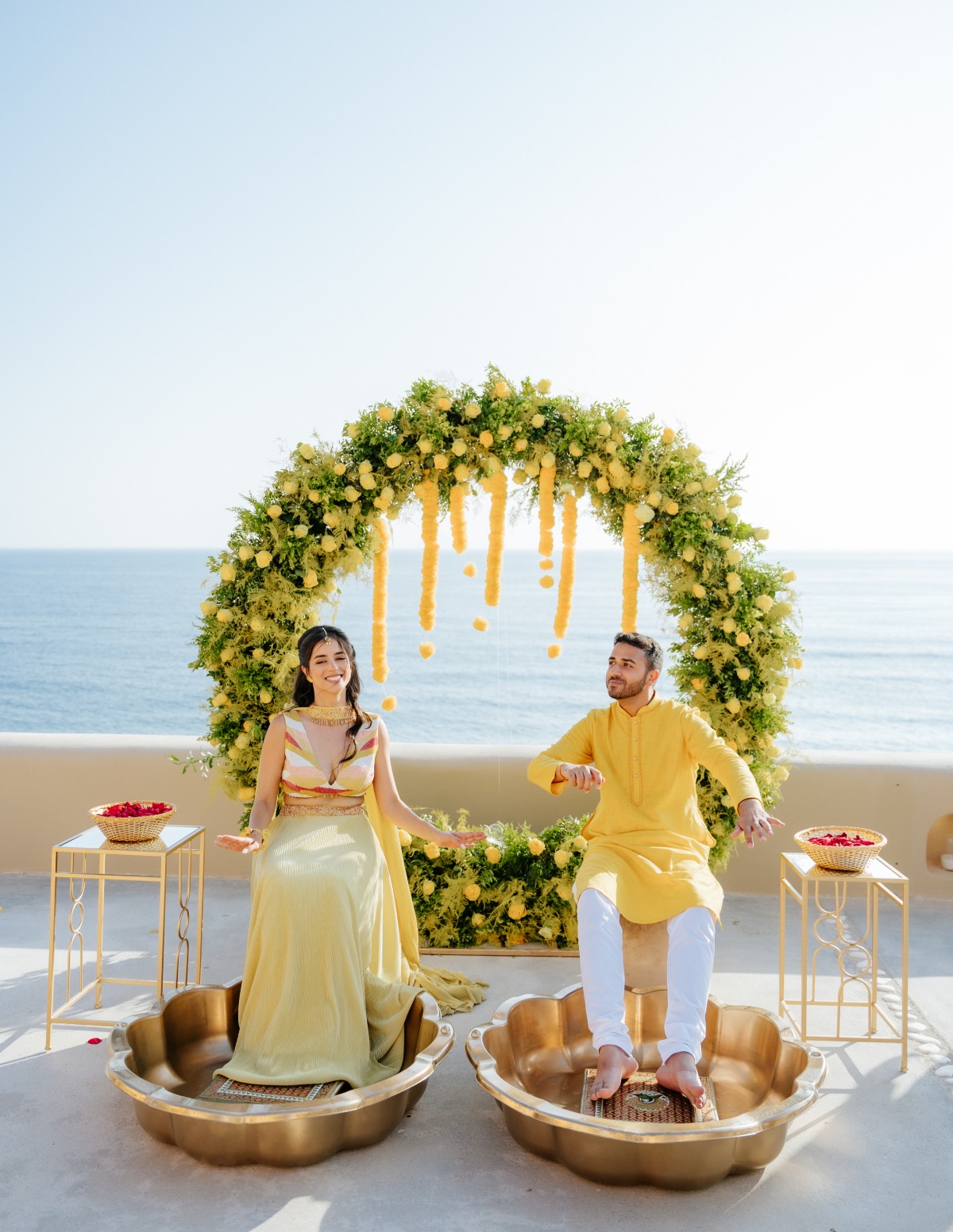
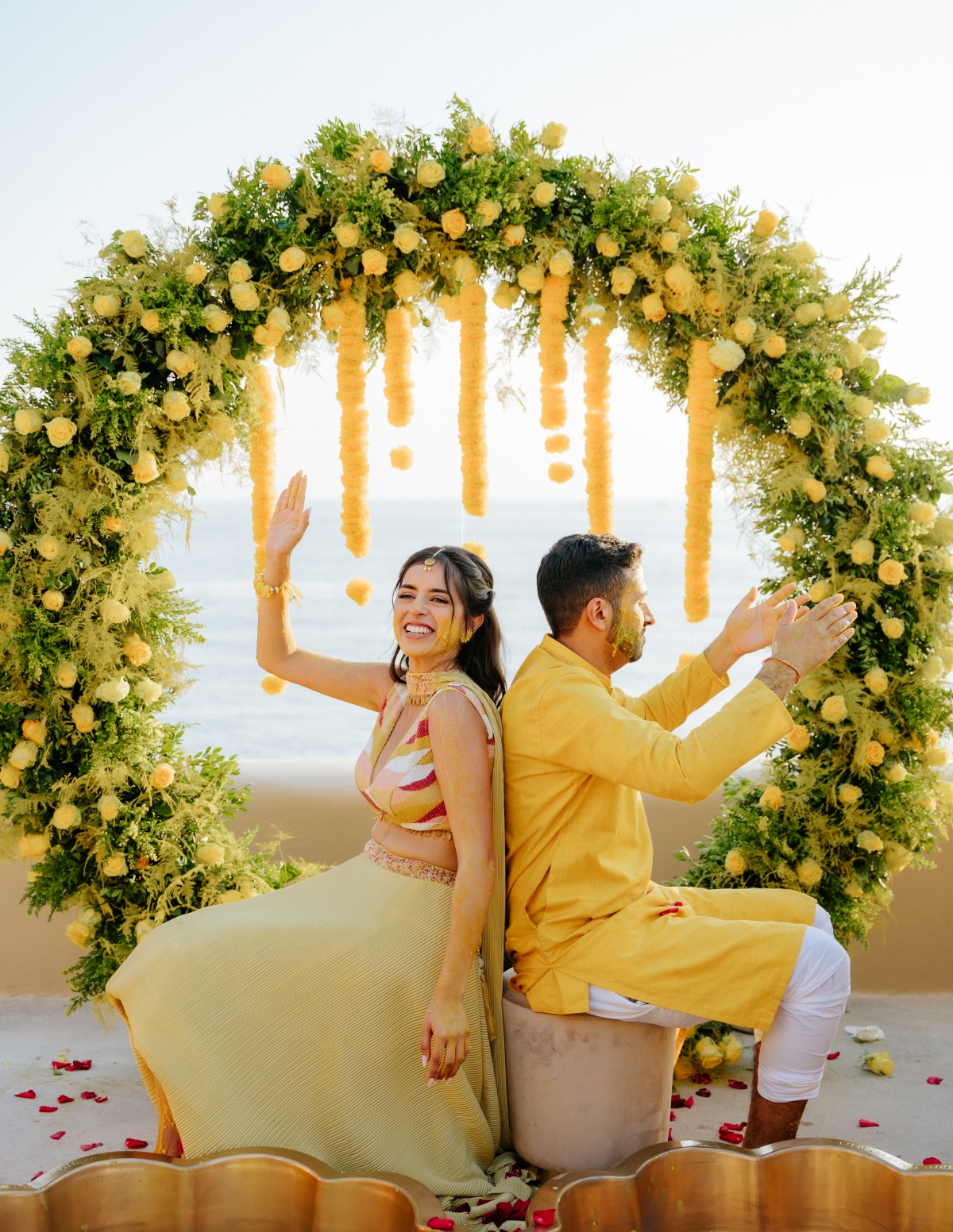
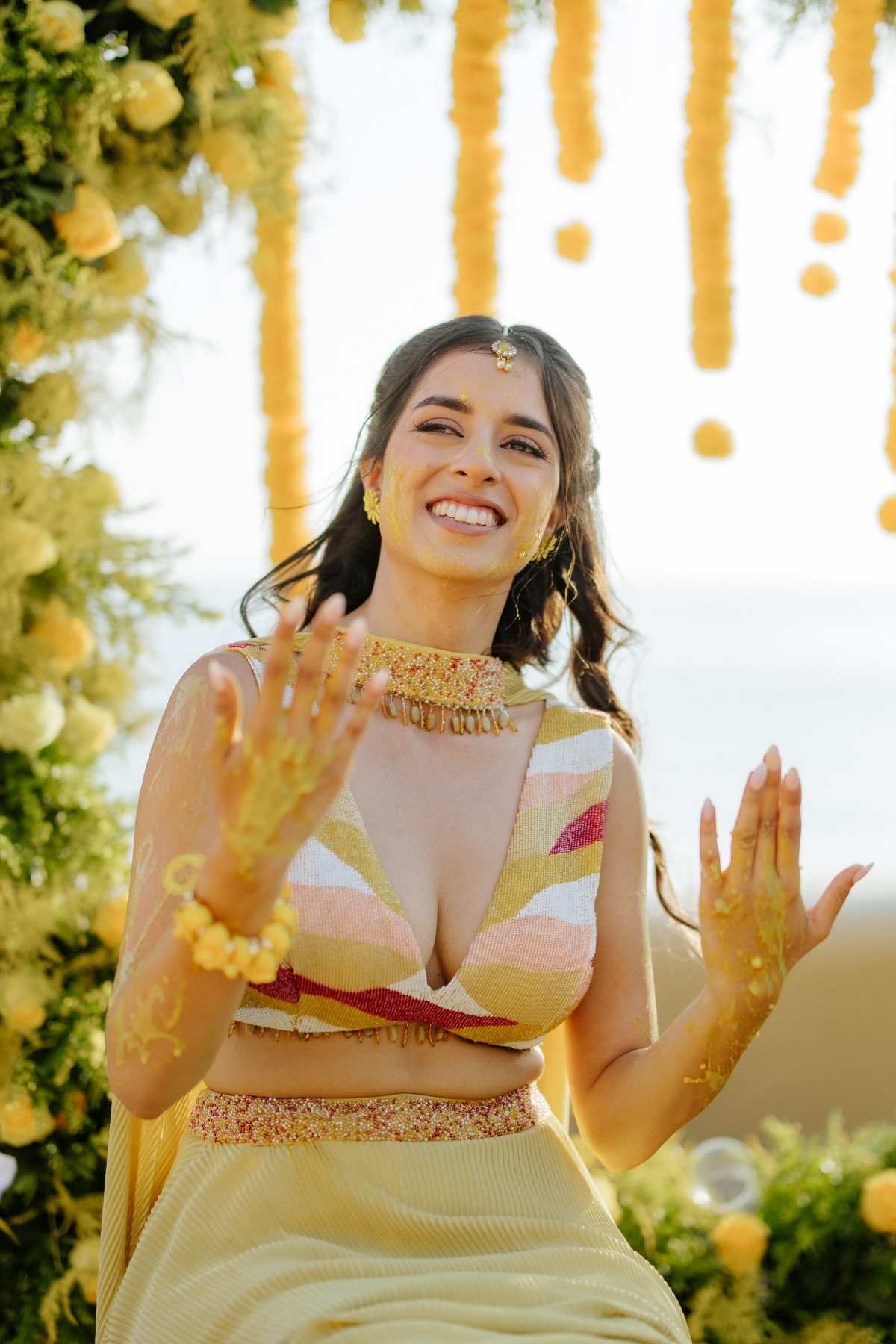
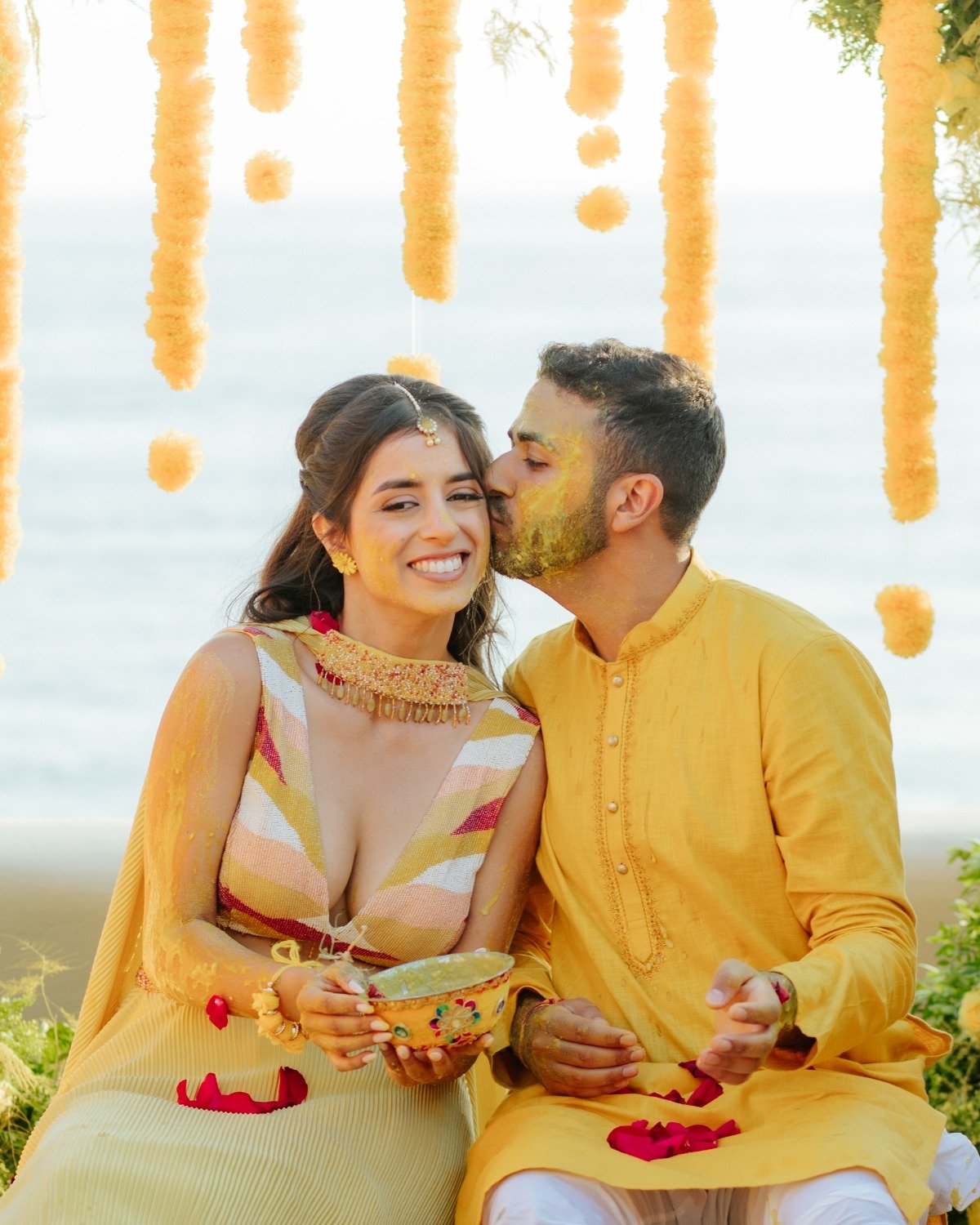
Traditional morning-of rituals for the couple
The Haldi ceremony is among the most enjoyable events during a Hindu wedding. In this ritual, a paste of turmeric (haldi) is applied to the bodies of the bride and groom on the morning of their wedding day. The mixture, known by various names in different regions, is believed to beautify and cleanse the couple, while the yellow color is considered auspicious and a symbol of purity and fertility. Additionally, haldi has antiseptic properties, which are thought to protect the couple from any illnesses before their wedding. Rawina and Nichant went through this meaningful ritual together on the second day of their three-day event to symbolize their spiritual union and commitment to each other.
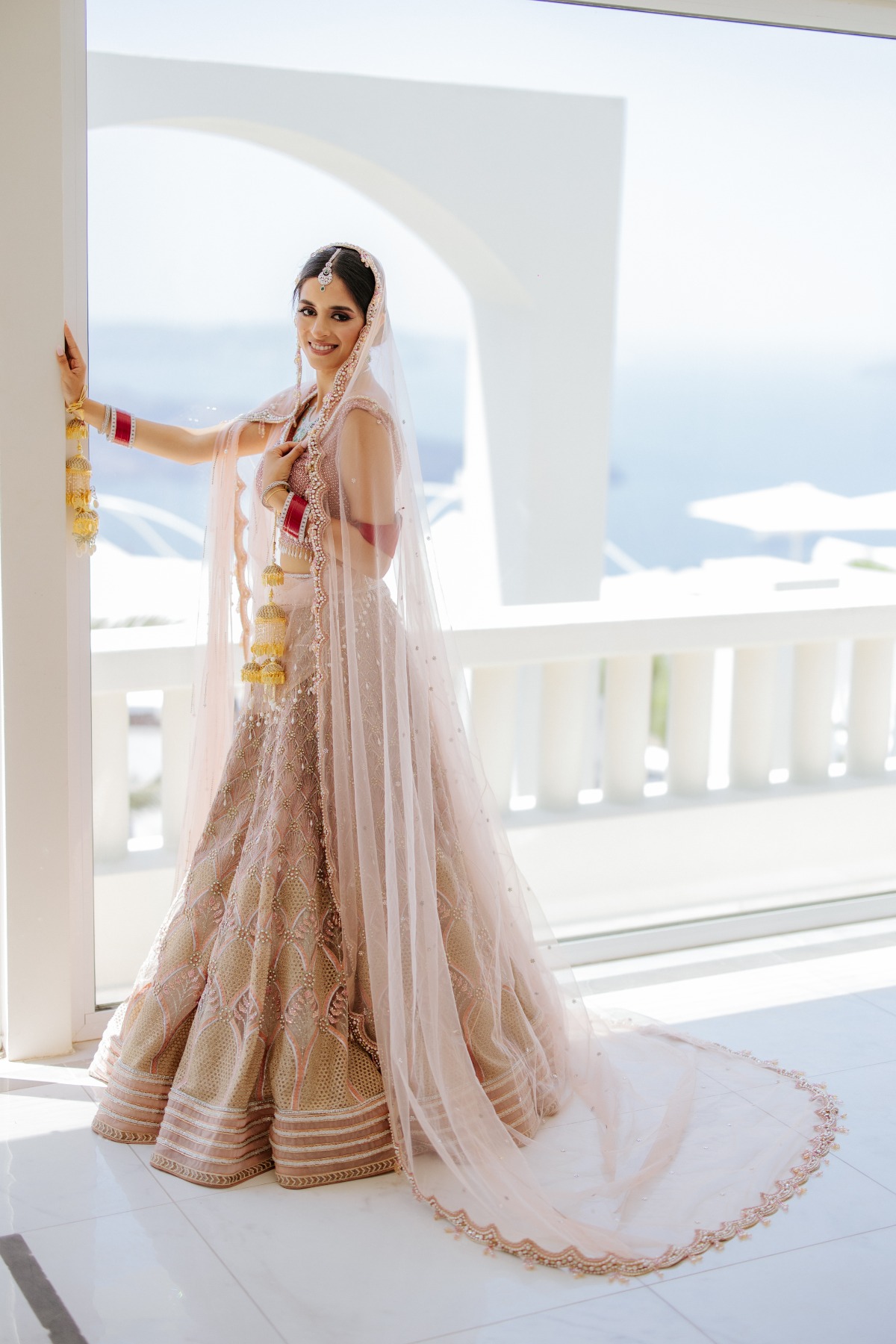
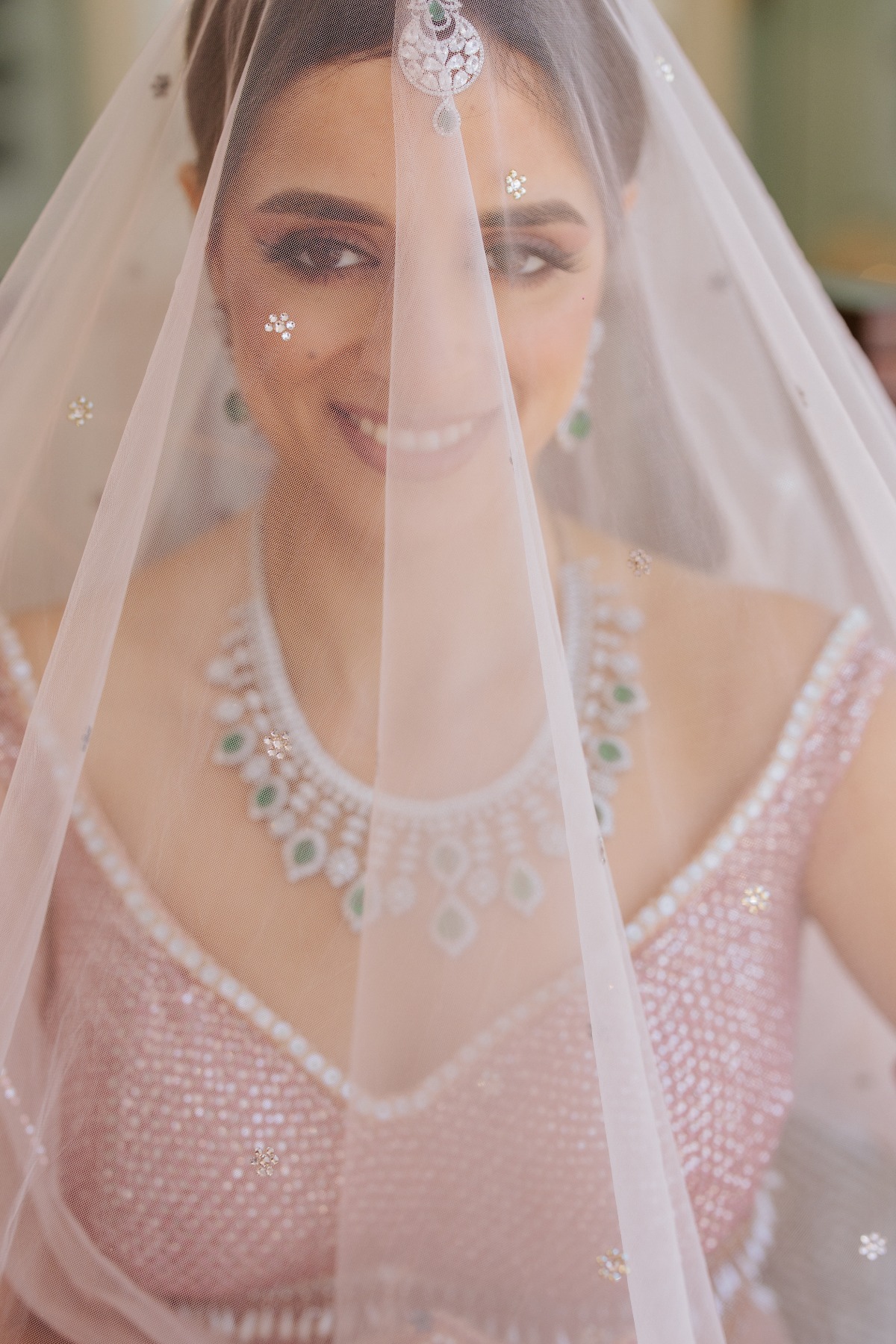
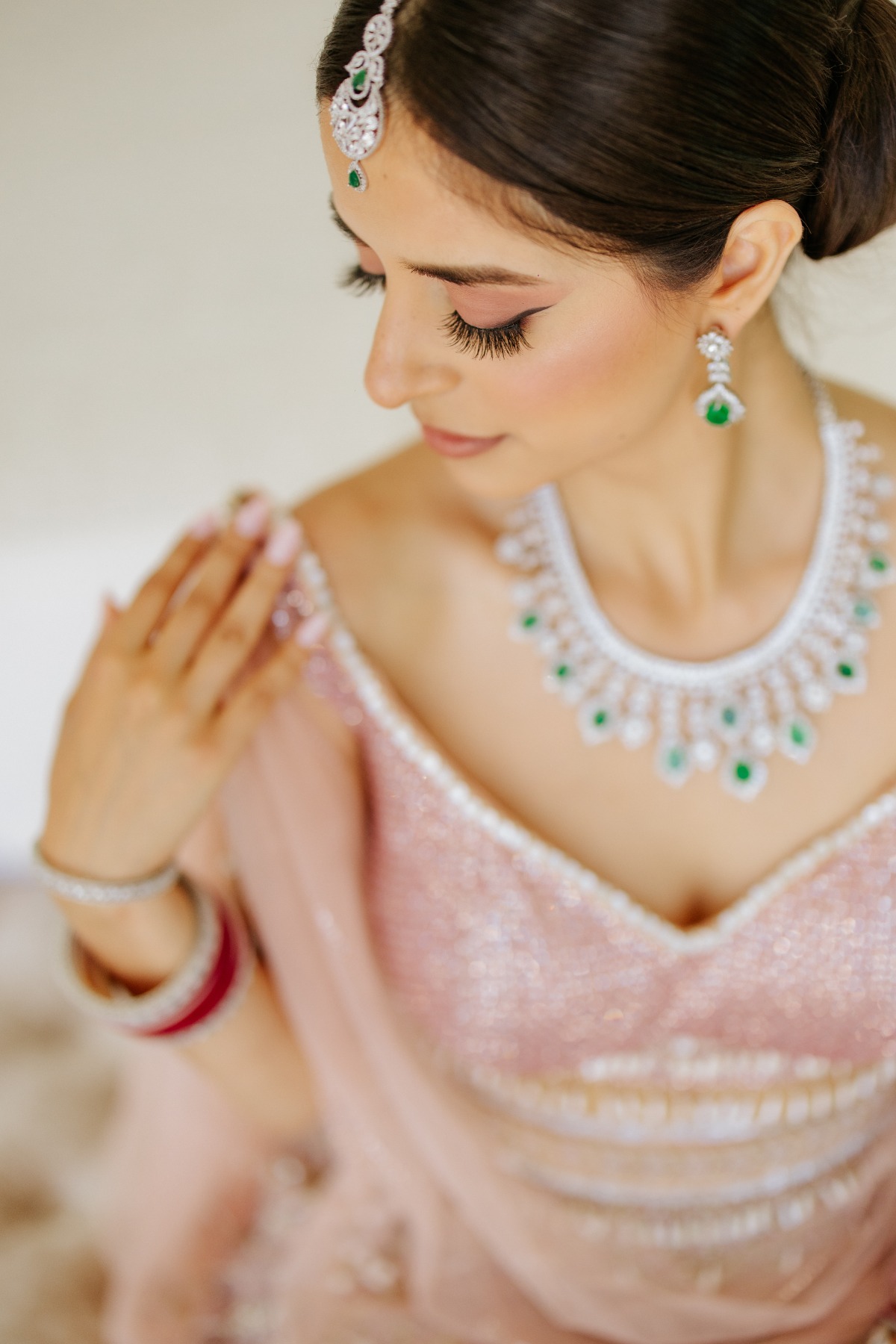
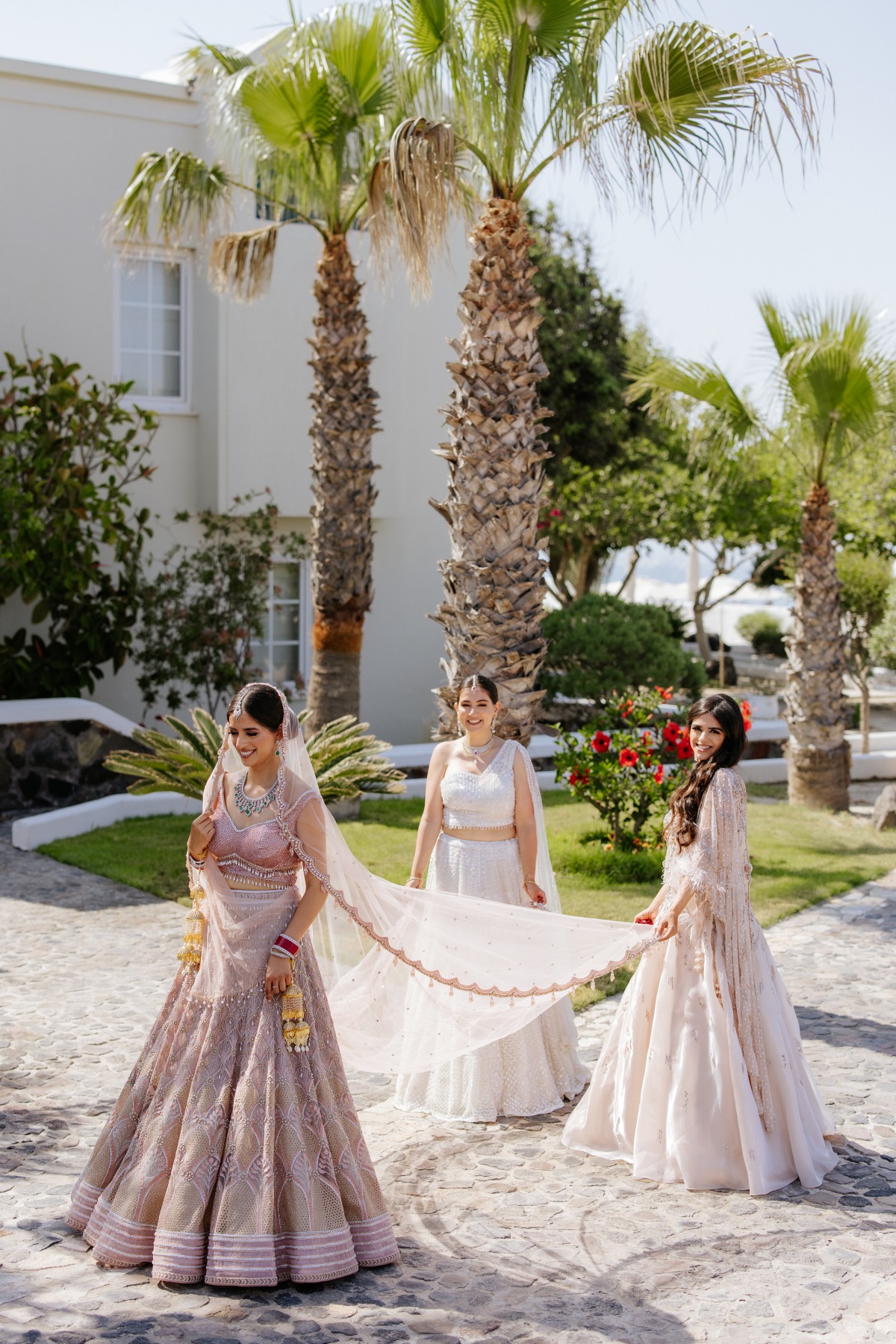
Saying "I do" with Hindu traditions
On the third day of this luxury event, Rawina and Nichant took part in the Hindu wedding day traditions. First was the the Baraat, or Grand Procession. During the Baraat, the groom, dressed in a Sherwani and Churidars, rides an elephant or a majestic white horse, representing his regal entry into married life. The entrance of Nichant was a truly impressing moment as he looked radiant inside his traditional costume, Kafni, a long shirt extending to the knees, with Pijamo, leggings. Nichant also wore a turban that elevated even more the traditional vibes of his attire!
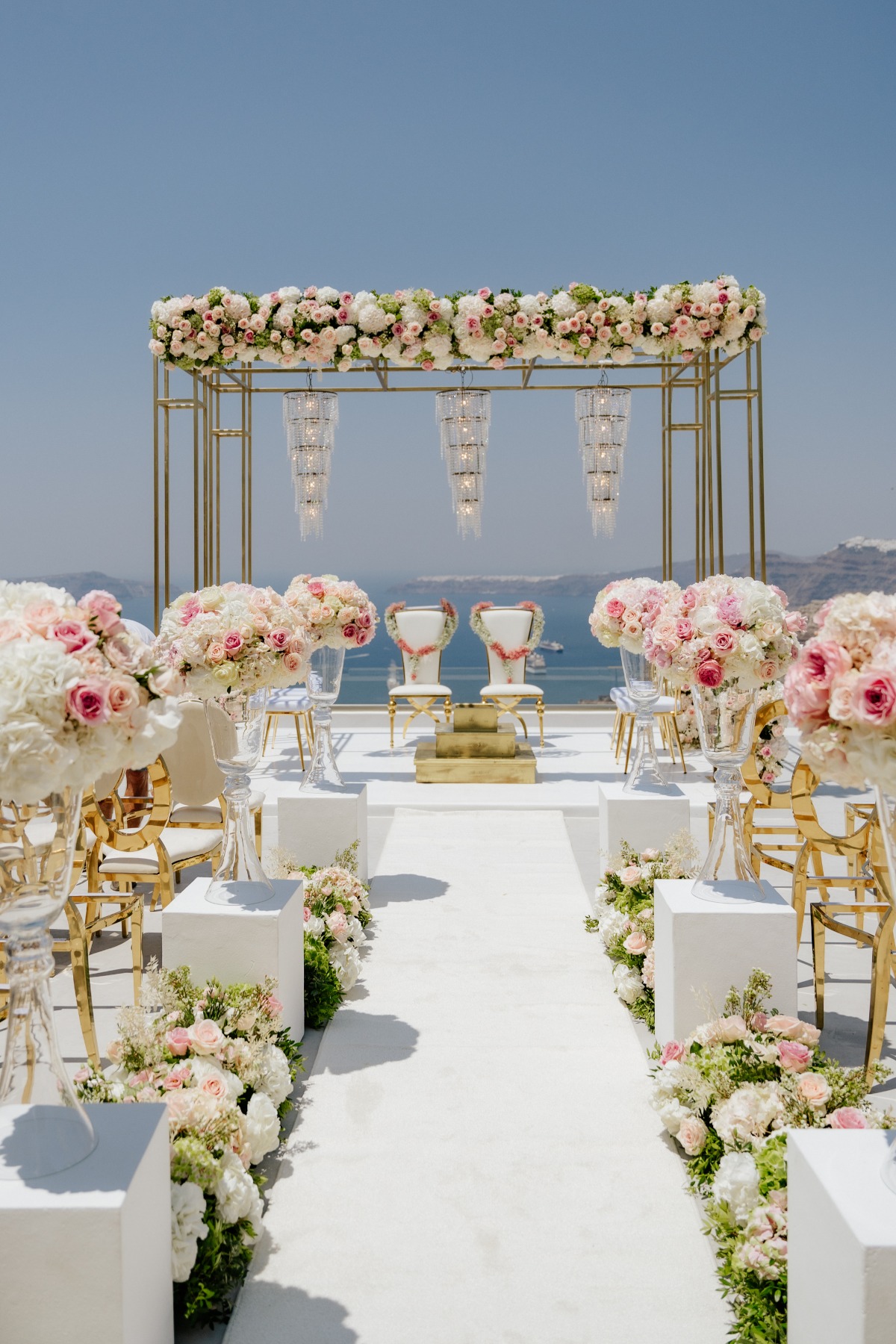
Colorful and contemporary floral garlands
At the wedding altar, the bride and groom then exchanged JaiMalas (floral garlands) symbolizing their acceptance of each other as life partners. The colorful flowers exchanged between Rawina and Nichant were a symbol of their blossoming relationship and the beauty of their eternal bond. This exchange took place under the Mandap, a sacred canopy representing the universe under which the wedding ceremony takes place. The four pillars decorated with flowers from Red Box Days symbolize the four parents of the couple and their blessings.
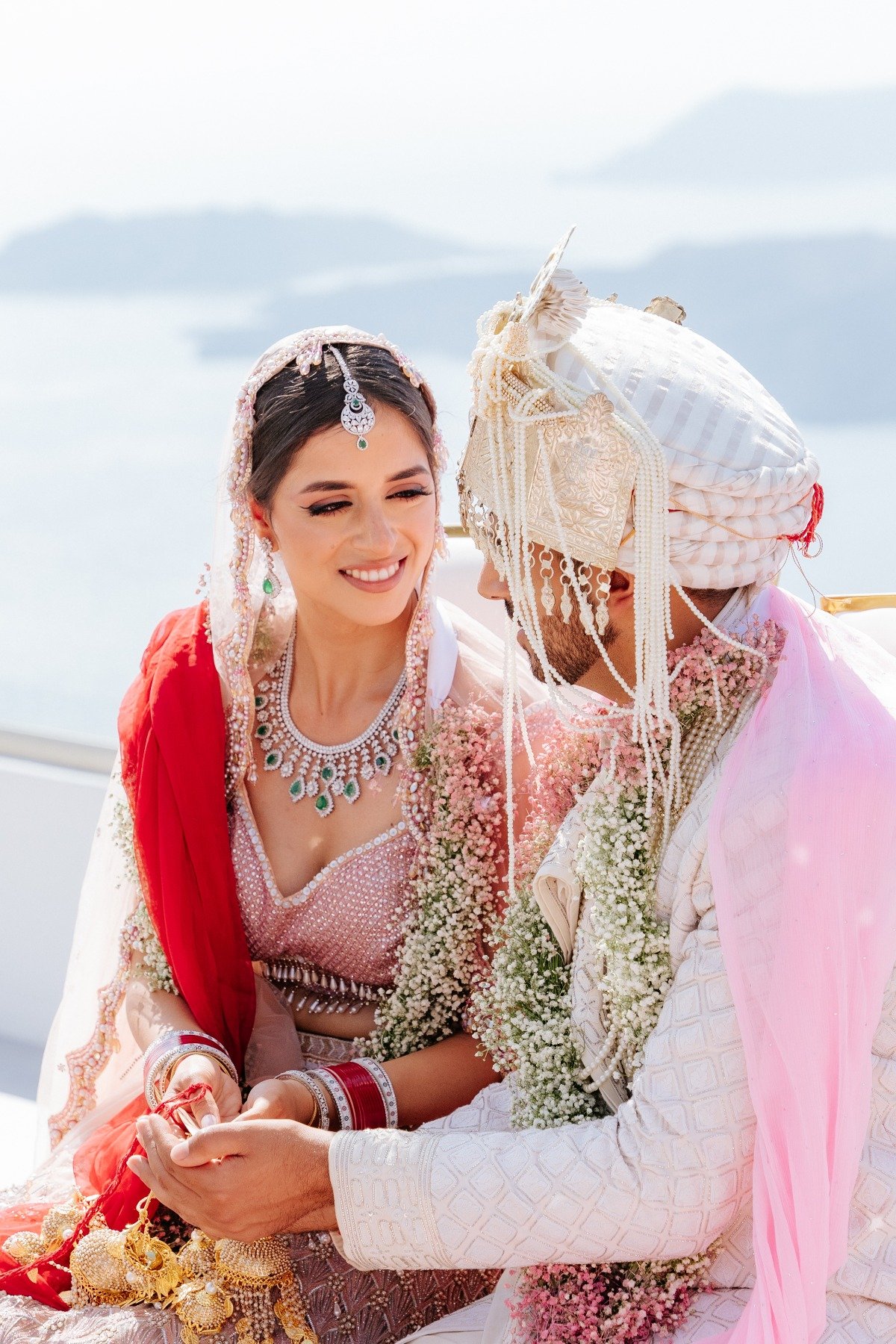
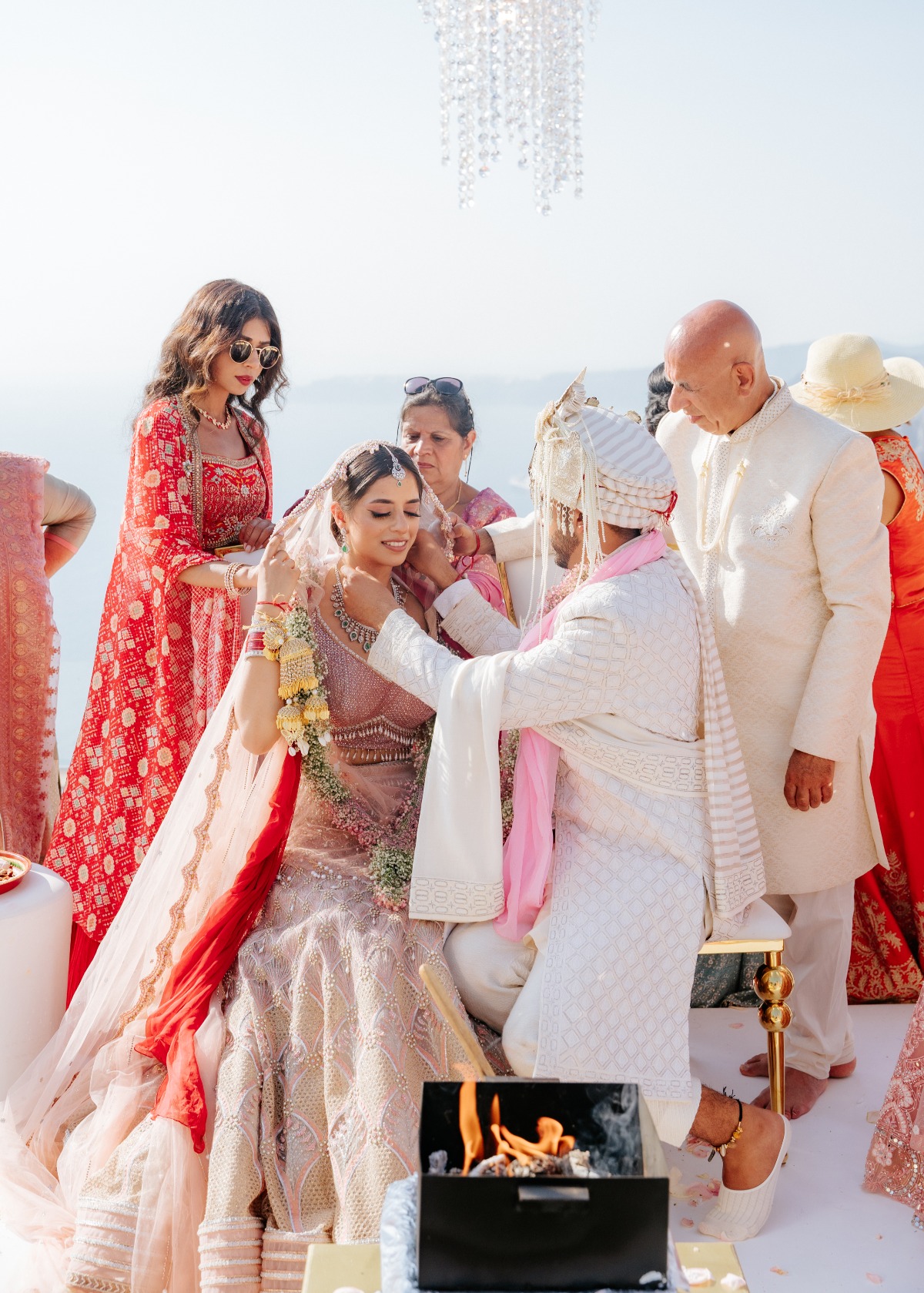
You may also like
This two ceremony Texas wedding featured colorful Hindu traditions
A 3 day, 5 event Hindu wedding extravaganza with a hint of Tay Swift
Jaw-dropping Hindu wedding in Santorini
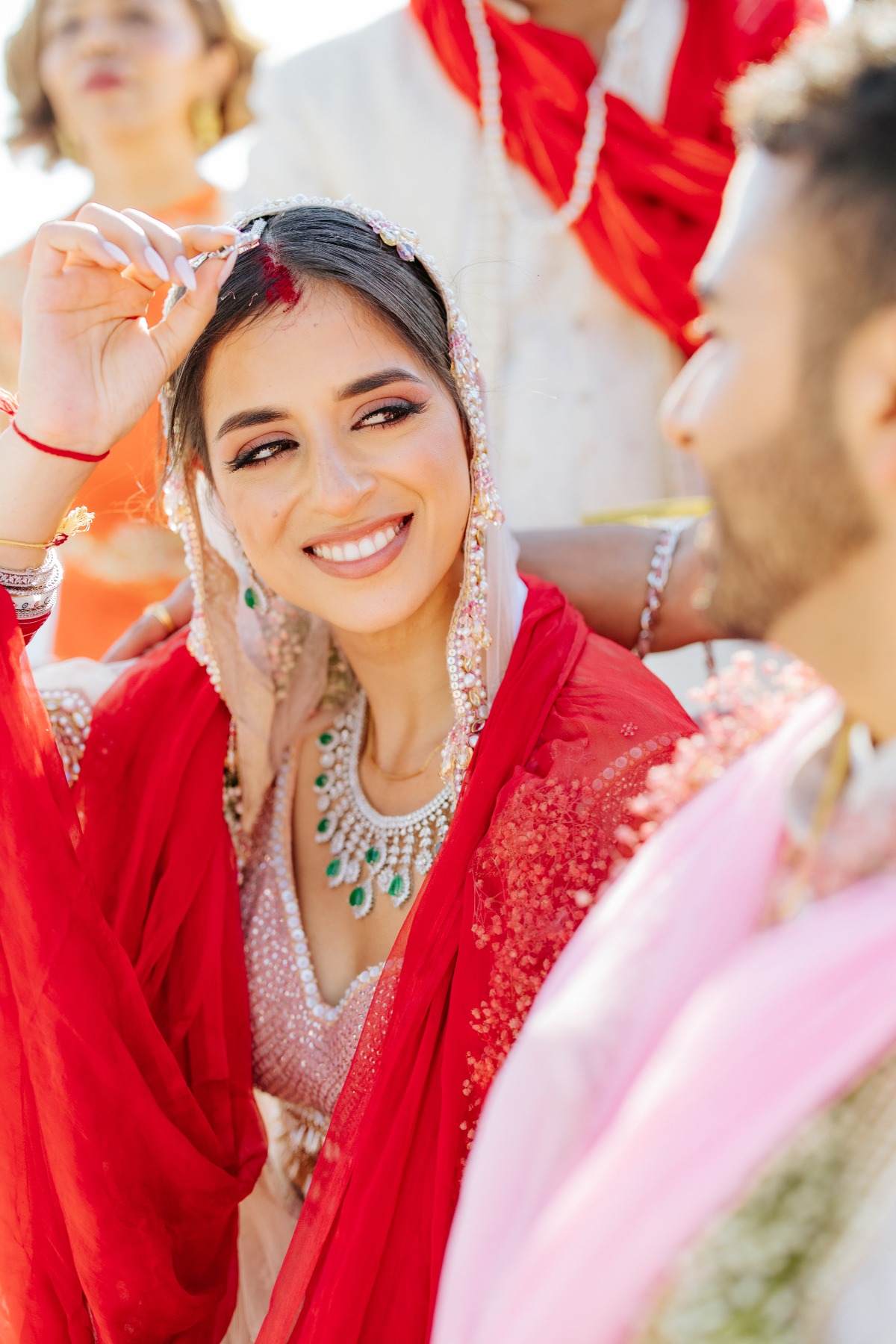
Taking the next step, symbolically
Rawina and Nichant then took part in the Mangalphera, the pivotal ritual where the couple walks around the sacred fire seven times, symbolizing their seven vows or promises to each other. As they take each step, they make commitments to support and cherish one another in various aspects of life, including love, respect, and companionship. After the Mangalphera, the groom applies Sindoor, a red-orange powder, to the bride’s forehead representing the bride’s status as a married woman. The Mangalsutra, a necklace of gold and black beads, is then tied around the bride’s neck by the groom, symbolizing their commitment to each other and the groom’s acceptance of his responsibility to protect and care for the bride.
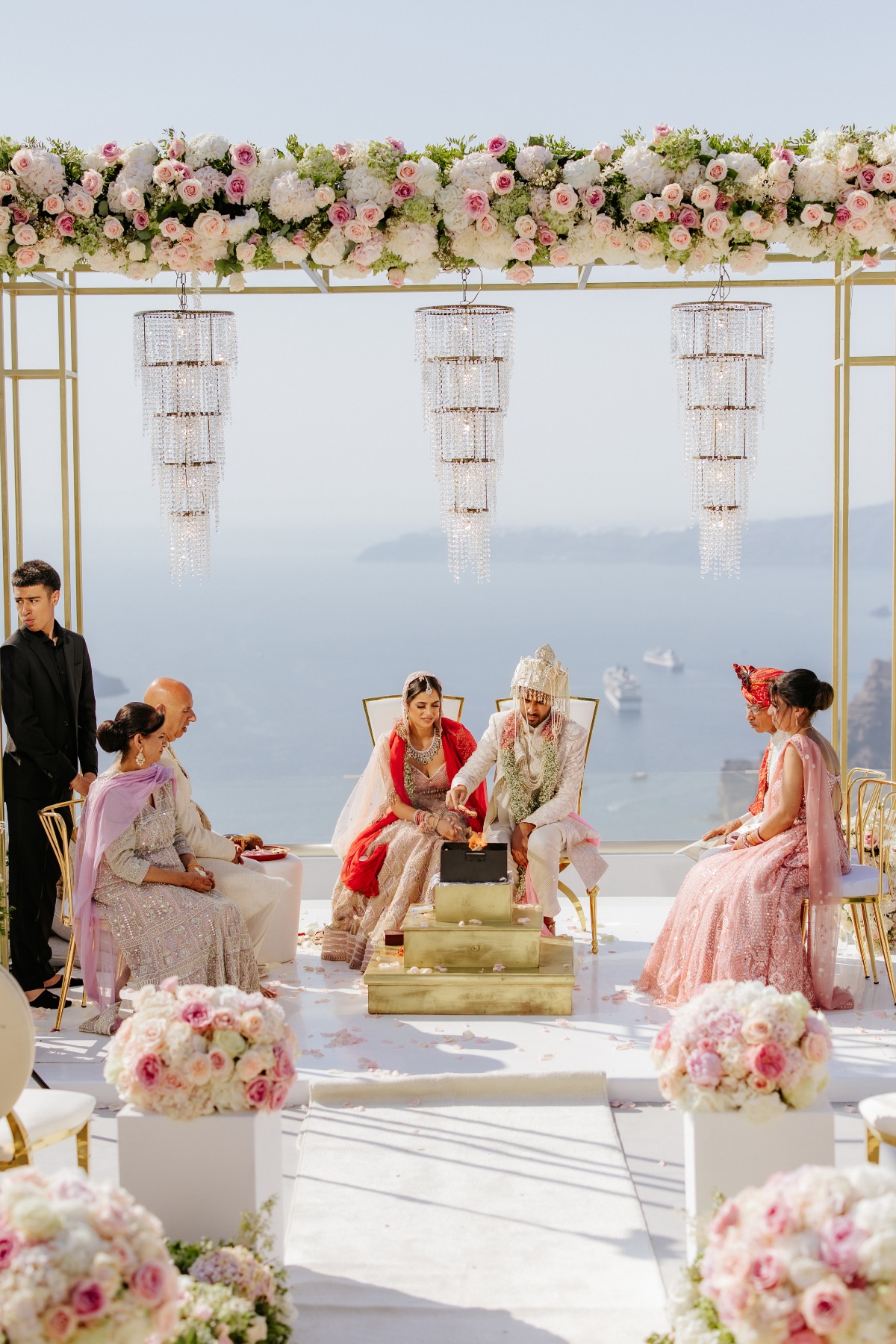
Showcasing a spiritual connection
The close the ceremony, the Saptapadi is a crucial ritual where the couple takes seven steps together, representing the seven vows they make to build a harmonious life together. With each step, they promise to support each other in their mental, physical, and spiritual growth, as well as in their pursuit of prosperity, happiness, and knowledge. This ritual emphasizes the importance of mutual love, respect, and understanding in a successful marriage and was one of the most meaningful moments of this wedding event for the bride and groom, as well as their guest and families. It truly culminated the gorgeous wedding weekend in a breath-taking location.
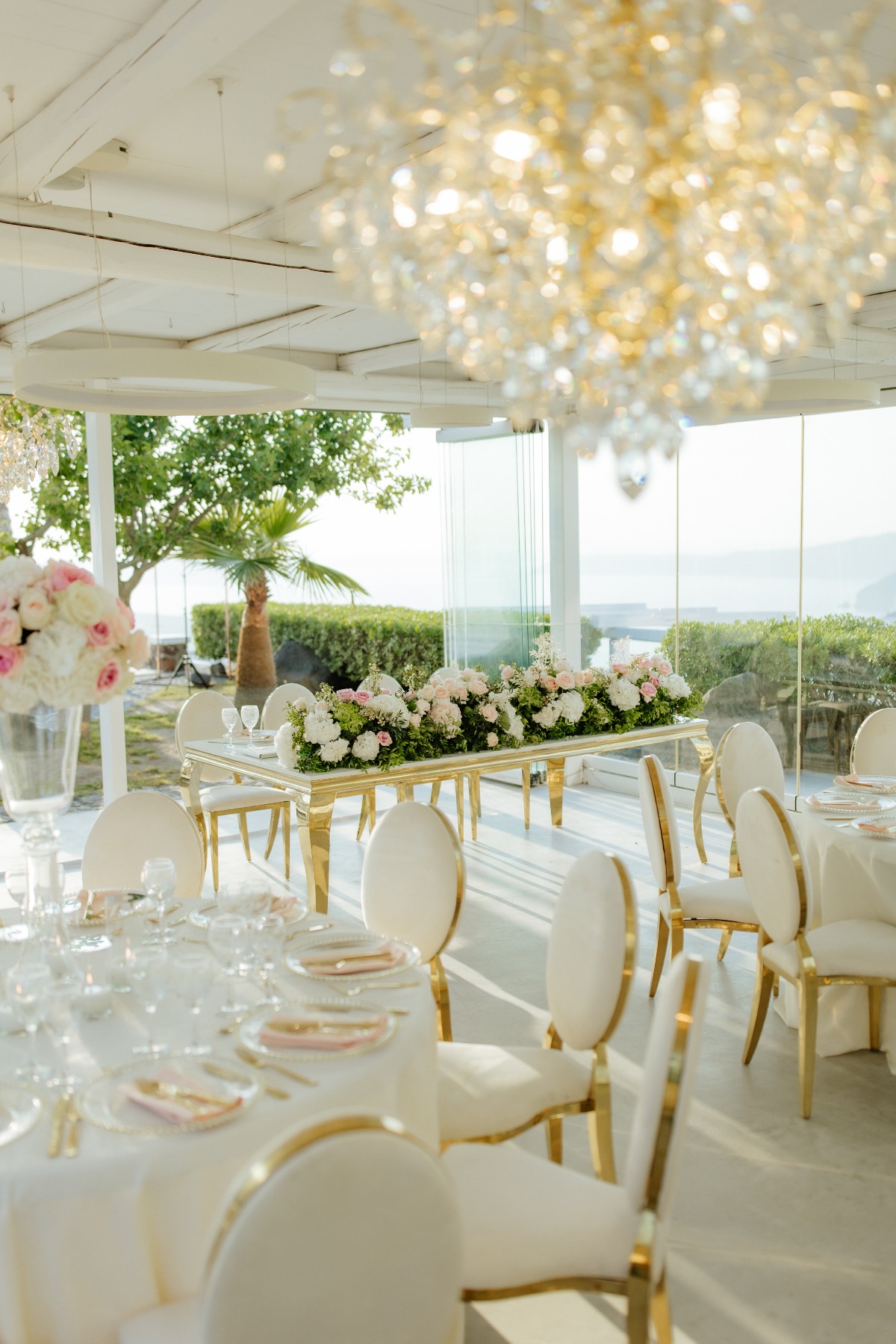
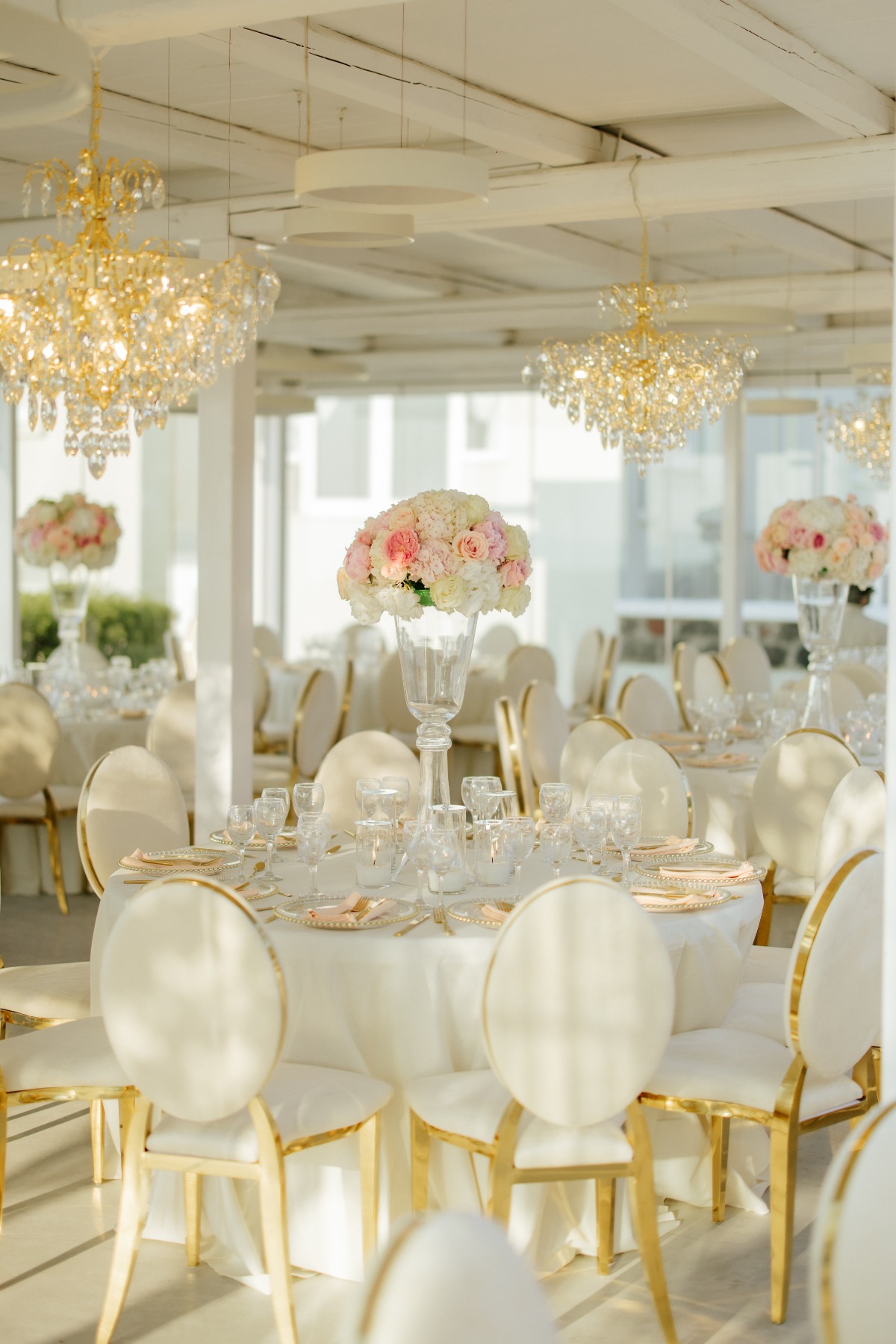
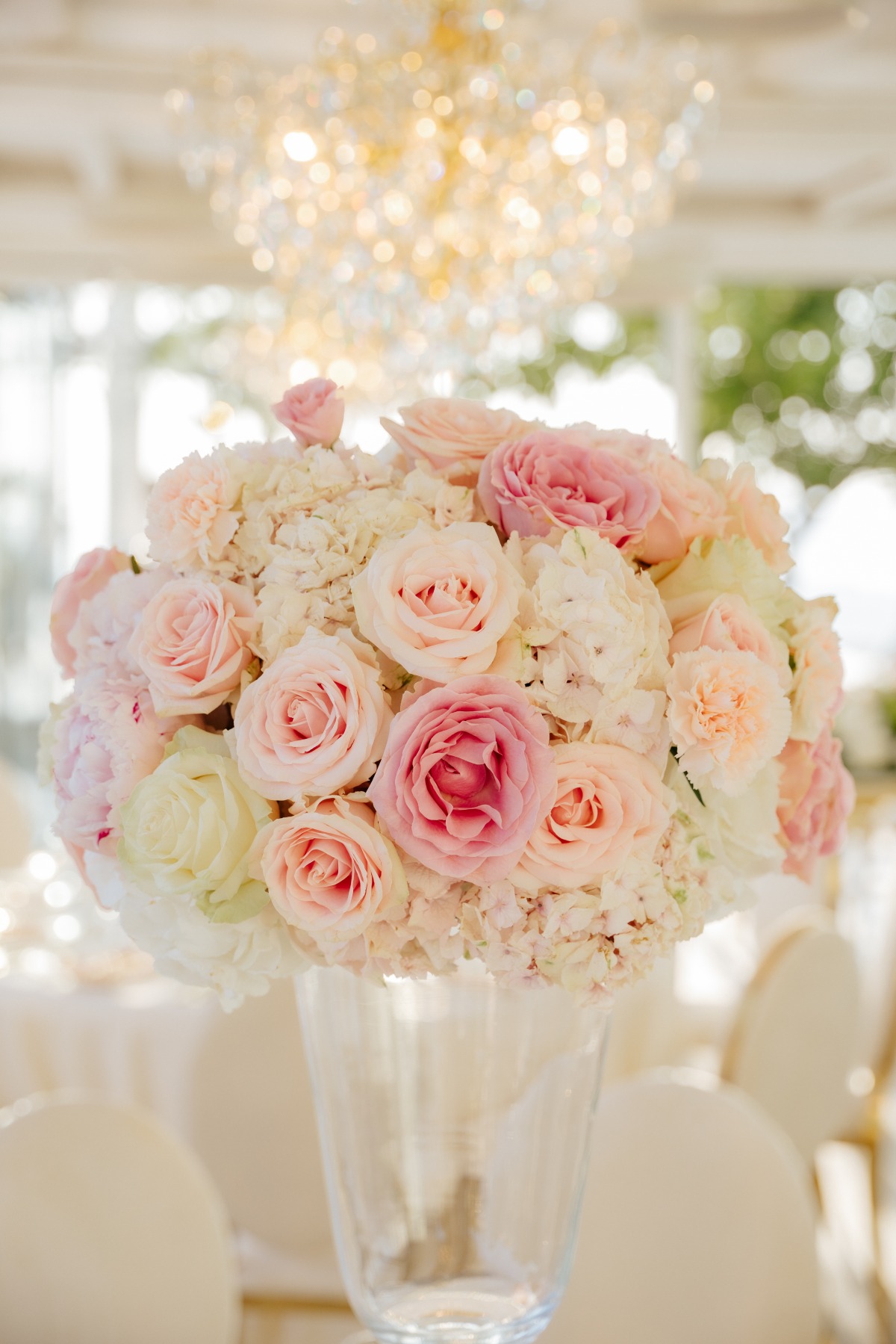
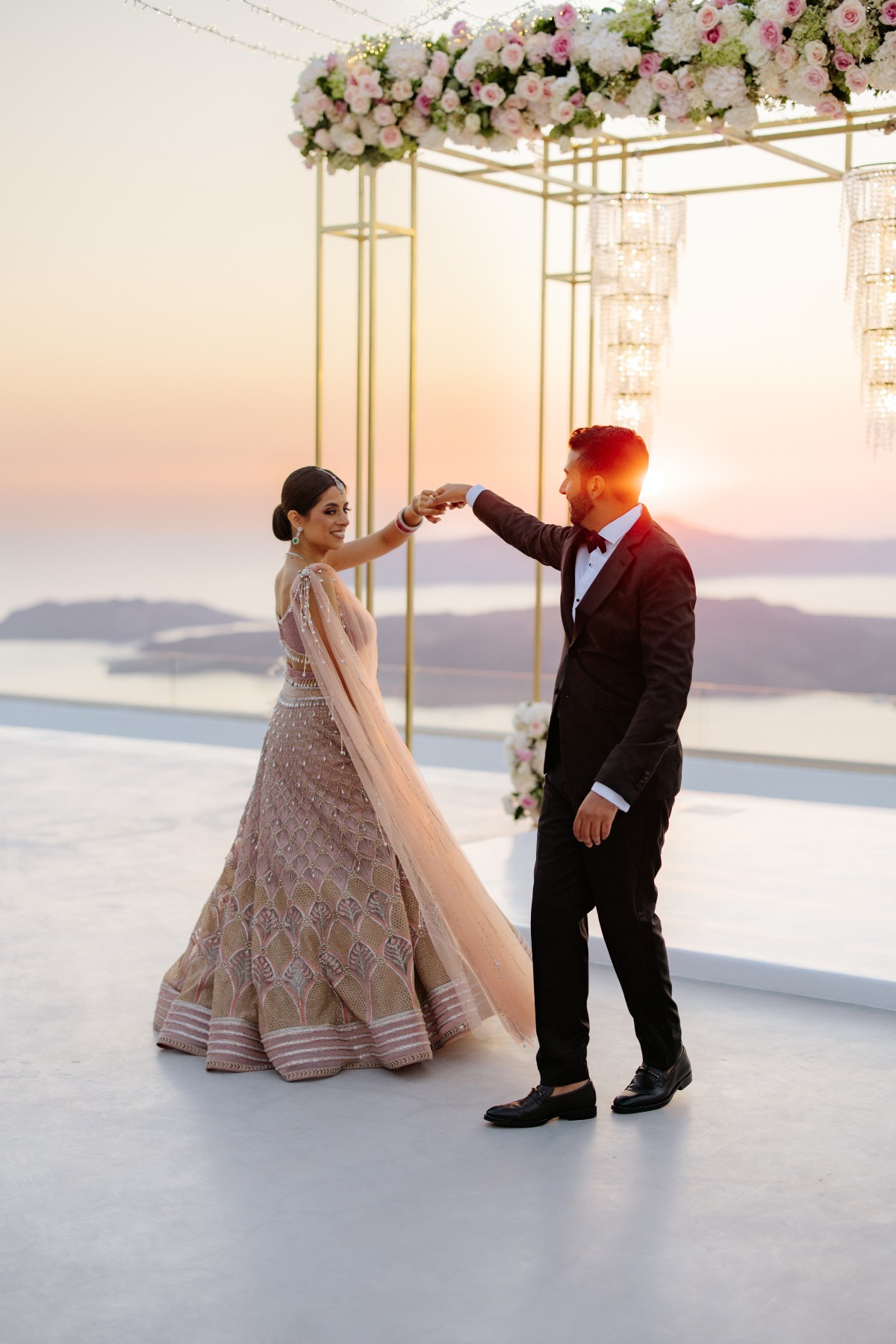
- Wedding Photographers: Dream Diaries India
- Event Planning & Design: DW Events
- Flowers: Red Box Days
- Venues: Santorini Gem Wedding Venue
- Lighting, Entertainment & Photo Booth: Santorini Events
- Rentals: Weddings & Whimsy
- Rentals: White Knot
